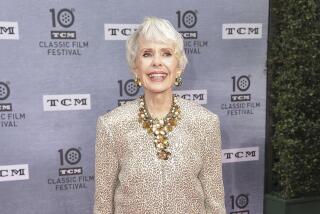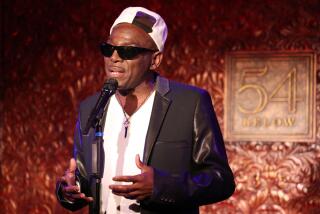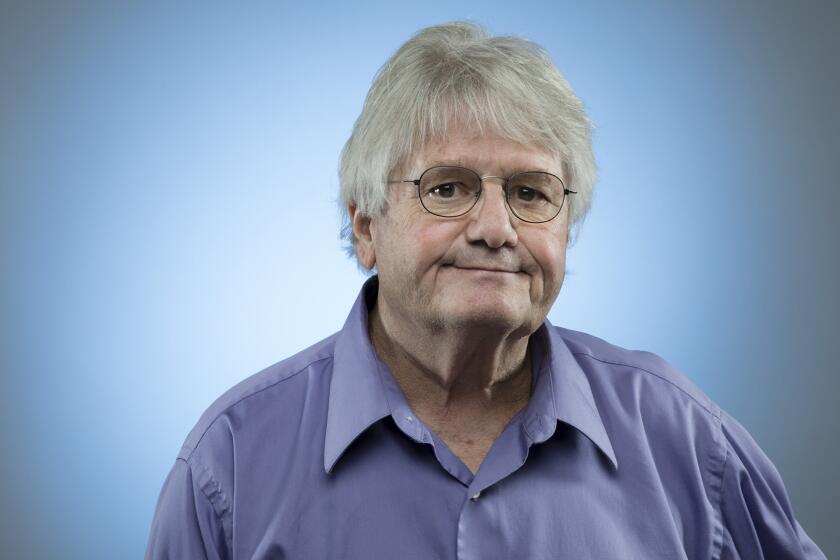PASSINGS: Barbara Kent, Edgar Villchur
Barbara Kent
Silent film star also was in talkies
Barbara Kent, 103, an actress who began her career in silent films of the 1920s and made the transition to talkies in the Harold Lloyd comedies “Welcome Danger” and “Feet First,” died Oct. 13 in Palm Desert, her family announced. No cause was given.
She was born Barbara Cloutman in Gadsby, Canada, on Dec. 16, 1907, and her family moved from Alberta to Hollywood in the early 1920s.
After graduating from Hollywood High School in 1925, she signed a contract with Universal Pictures. Using the stage name Barbara Kent, she was soon loaned to MGM for “Flesh and the Devil,” a 1926 drama starring silent-film star John Gilbert and Swedish actress Greta Garbo in one of her first U.S. film roles.
A brunette ingenue, Kent appeared in a string of silent films, including “The Drop Kick” (1927) opposite Richard Barthelmess and “Modern Mothers” (1928) with Douglas Fairbanks Jr.
Her next two films, “Lonesome” (1928) and William Wyler’s “The Shakedown” (1929), both began as silent pictures and had talking scenes added.
In 1929, she was cast to star opposite Lloyd in his first talkie, “Welcome Danger,” and again a year later in “Feet First,” memorable for its scene featuring Lloyd precariously perched on a scaffolding high above Spring and 8th streets in downtown Los Angeles.
“I never worried about whether I would continue in talking films,” Kent told writer Michael G. Ankerich for his 1998 book “The Sound of Silence.” “I knew I didn’t have a high voice and that I would be OK in it.”
In the early ‘30s, she appeared in “Night Ride” with Edward G. Robinson, “Indiscreet” with Gloria Swanson and “Freighters of Destiny” with western star Tom Keene before her contract ran out.
In 1932, she married agent Harry Edington and acted in only a few more films by the end of the decade, including the 1933 version of “Oliver Twist.”
Edington died in 1949. She later married Jack Monroe, taking his name. He died in 1998.
Edgar Villchur
Inventor of small hi-fi speakers
Edgar Villchur, 94, who went from repairing radios to developing a groundbreaking small speaker that is credited with bringing hi-fi into the home, died Monday at his home in Woodstock, N.Y., his family said.
While teaching a course in sound reproduction at New York University, he came up with the idea for his speaker. His closed-cabinet device was much smaller than the audio equipment of the era, when speakers could be as large as refrigerators to generate the long wavelengths required to produce high-fidelity bass tones.
“My little prototype had better bass and less distortion than anything on the market, yet it was one-quarter the size,” Villchur told Stereophile magazine in 2005. “I thought, ‘This has got to be the future of loudspeakers.’ ”
With one of his NYU students, Henry Kloss, Villchur developed the speakers and founded Acoustic Research Inc., which produced the speaker and other stereo components.
After selling the company in 1967, he went into hearing aid research and developed the multi-channel compression hearing aid that has become the industry standard.
Born in 1917 in New York City to Russian immigrants, Villchur earned bachelor’s and master’s degrees in art history at City College of New York and began working with electronics while in the Army during World War II.
After the war, he opened a radio repair shop in Greenwich Village, where he built custom high-fidelity sets.
—Los Angeles Times staff and wire reports
More to Read
Start your day right
Sign up for Essential California for the L.A. Times biggest news, features and recommendations in your inbox six days a week.
You may occasionally receive promotional content from the Los Angeles Times.




















































